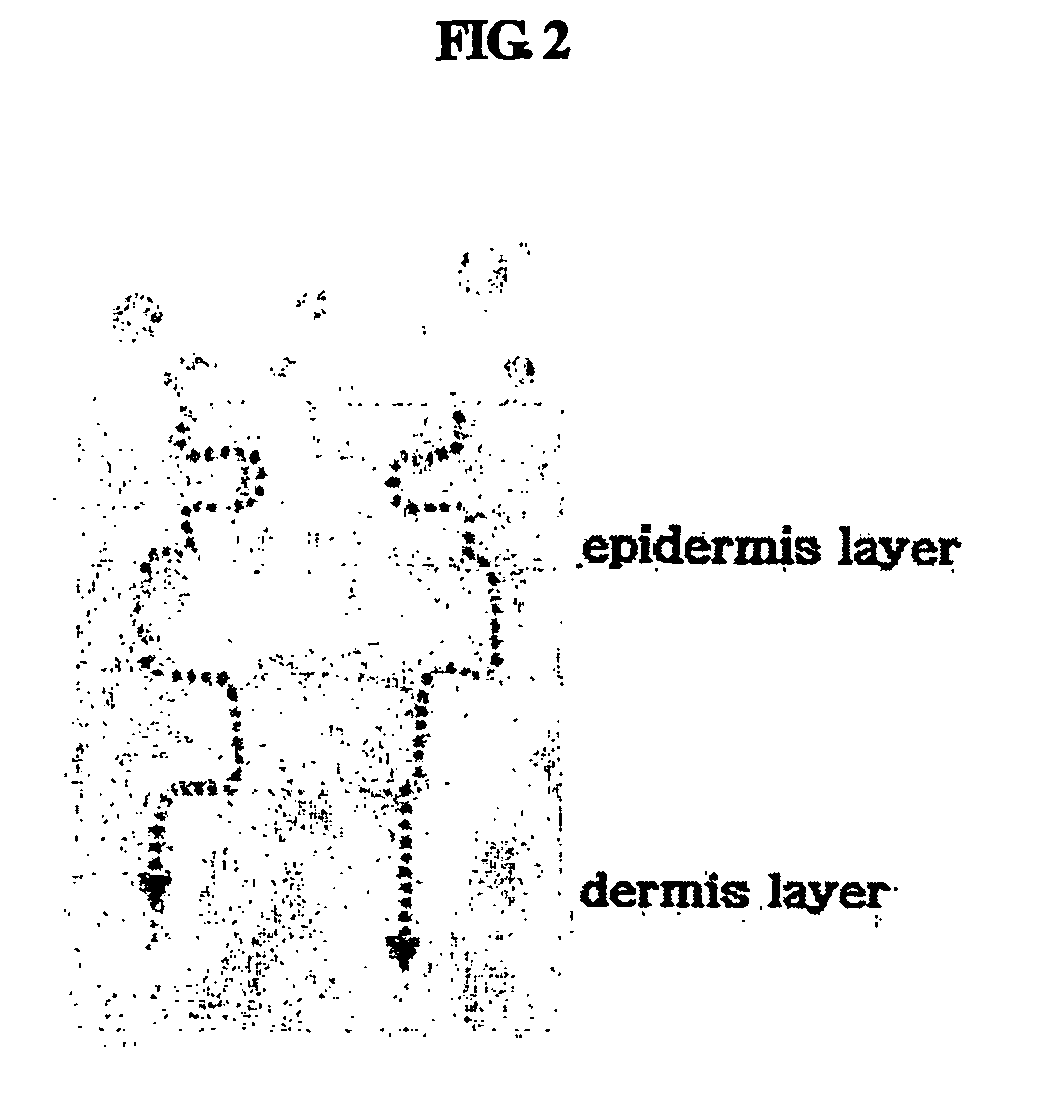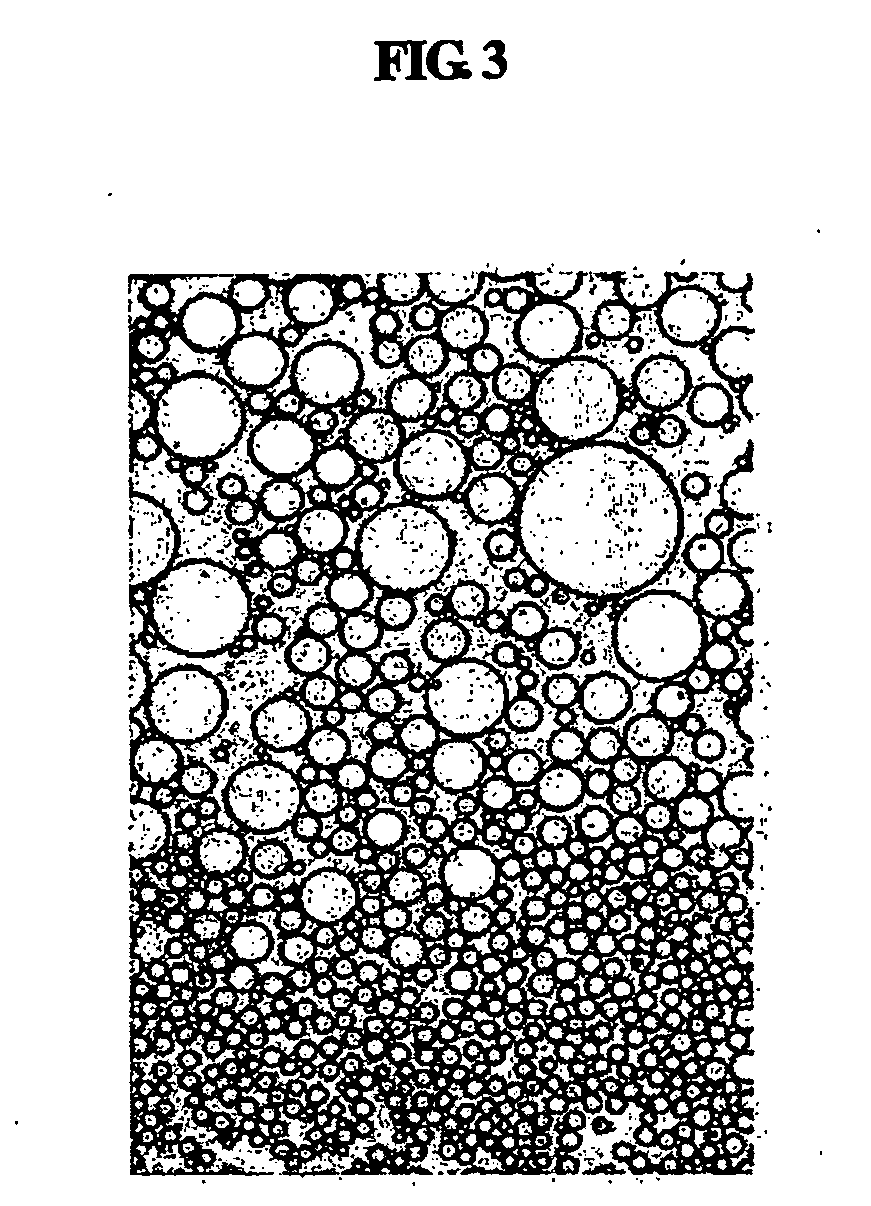Multiple-layered liposome and preparation method thereof
a liposome and multi-layered technology, applied in the direction of liposome delivery, drug compositions, medical preparations, etc., can solve the problems of limited function of inability to achieve skin whitening and ultraviolet protection, and achieves excellent skin permeability. , the effect of enhancing the stability of the active ingredien
- Summary
- Abstract
- Description
- Claims
- Application Information
AI Technical Summary
Benefits of technology
Problems solved by technology
Method used
Image
Examples
example 1
Preparation of Multilayered Liposomes Using a General Homo Mixer
[0053] Multilayered liposomes were prepared According to the present method, which is characterized by forming multilayered liposomes using a general low-speed homogenizer without a specific machine such as a high-pressure homogenizer, for example, a microfludizer. In detail, multilayered liposomes were prepared according to the following procedure.
[0054] 1) Adenosine was added to water warmed to 50° C. in a dissolving tank and agitated using a paddle mixer to be completely dissolved.
[0055] 2) Oil-phase components listed in Table 1, below, were added to a separate dissolving tank and heated to 70° C. to 75° C. to be completely dissolved.
[0056] 3) The oil-phase components of step 2 were added to the dissolving tank of step 1 and mixed for 5 min at 3000 rpm using a homo mixer to form liposomes.
[0057] 4) The mixture of step 3 was cooled to 45° C. and supplemented with an antioxidant, a thickener, an antiseptic and the...
example 2
Measurement of Liposome Size
[0063] The size of liposomes prepared in Example 1 and Comparative Examples (CE.) 1 to 4 was measured. The size of emulsified particles was measured three times for each sample using a particle size analyzer (Model 370, Nicomp, USA). Mean values of the measured results and the results obtained by 600× microscopic observation are given in Table 2, below.
TABLE 2Liposome size measured using particle size analyzerC.E.1C.E.2C.E.3C.E.4T.E.1T.E.2T.E.3Particle30-2001000-15000>3000150-350200-1500200-1500200-1500sizedistributionMean100400040002508001000900particlesize (nm)Structure ofUni-Multi-O / W liquidMixedMulti-Multi-Multi-liposomeslamellarlayeredcrystalline(unilamellarlayeredlayeredlayeredandmultilayered)
[0064] As apparent from the data of Table 2, unilamellar (Comparative Example 1) and multilayered (Comparative Example 4) liposomes, which were prepared using a high-pressure homogenizer, all had a uniform and small size compared to liposomes prepared withou...
example 3
Evaluation of Stability of Liposomes
[0066] The liposomes prepared in Test Example 1 and Comparative Examples 1 to 4 were stored in an incubator at 25° C. under relative humidity of 70%±5 and observed for their stability. The results are summarized in Table 3, below. In Table 3, the particle size of liposomes is expressed as ran.
TABLE 3Stability of liposomesC.E. 1C.E. 2C.E. 3C.E. 4T.E. 1T.E. 2T.E. 3Immediately after preparation100400040002508001000900After 2 weeks10042004010280800900902After 1 month110602039884108101010913After 3 months130402042071100805989897After 12 months210620040239807961012902
[0067] As apparent from the data of Table 3, nano-sized liposomes of about 100 ran, prepared in Comparative Example 1, were thermodynamically stable, did not change in size for a storage period of one month and enlarged only about two times after three months. Multiple liquid-crystalline liposomes prepared in Comparative Example 3 were considered not to be liposomes but oil-in-water (O / W...
PUM
 Login to View More
Login to View More Abstract
Description
Claims
Application Information
 Login to View More
Login to View More - R&D
- Intellectual Property
- Life Sciences
- Materials
- Tech Scout
- Unparalleled Data Quality
- Higher Quality Content
- 60% Fewer Hallucinations
Browse by: Latest US Patents, China's latest patents, Technical Efficacy Thesaurus, Application Domain, Technology Topic, Popular Technical Reports.
© 2025 PatSnap. All rights reserved.Legal|Privacy policy|Modern Slavery Act Transparency Statement|Sitemap|About US| Contact US: help@patsnap.com



